The Azawakh dog is a sighthound breed originating from West Africa. These elegant and athletic dogs are known for their impressive speed and agility. The nomadic Tuareg people of the Sahara desert historically bred them for hunting game, including gazelles and other swift prey. Today, the Azawakh continues to excel in various dog sports and is gaining popularity as a companion and show dog.
Azawakhs have a statuesque build, with a deep chest and long, slender legs that enable them to cover vast distances with ease. They stand about 23 to 29 inches tall at the shoulder and weigh between 35 to 55 pounds. Their short coat enhances their distinctive appearance, coming in various colors and patterns, such as red, blue, black, brindle, and white.
These dogs have a gentle and loyal nature, forming strong bonds with their families. They have a known reputation for their independent and aloof demeanor towards strangers, which makes them excellent watchdogs. Early socialization is crucial to ensure that they remain well-adjusted and confident in various situations.
As sighthounds, Azawakhs possess a strong prey drive and an instinct to chase. It is essential to keep them on a leash or within a secure, fenced area, as their exceptional speed and pursuit instinct may lead them to bolt after small animals. Their high energy levels necessitate regular exercise to keep them mentally and physically stimulated. Daily walks, free runs in a secure area, and opportunities to sprint will help keep these agile dogs content.
Training Azawakhs can be a bit of a challenge due to their independent nature. Positive reinforcement methods work best, and consistency is key. They respond well to praise and rewards, making training a rewarding experience for both the dog and the owner.
Continue reading for more information on this remarkable breed!
Azawakh Pictures
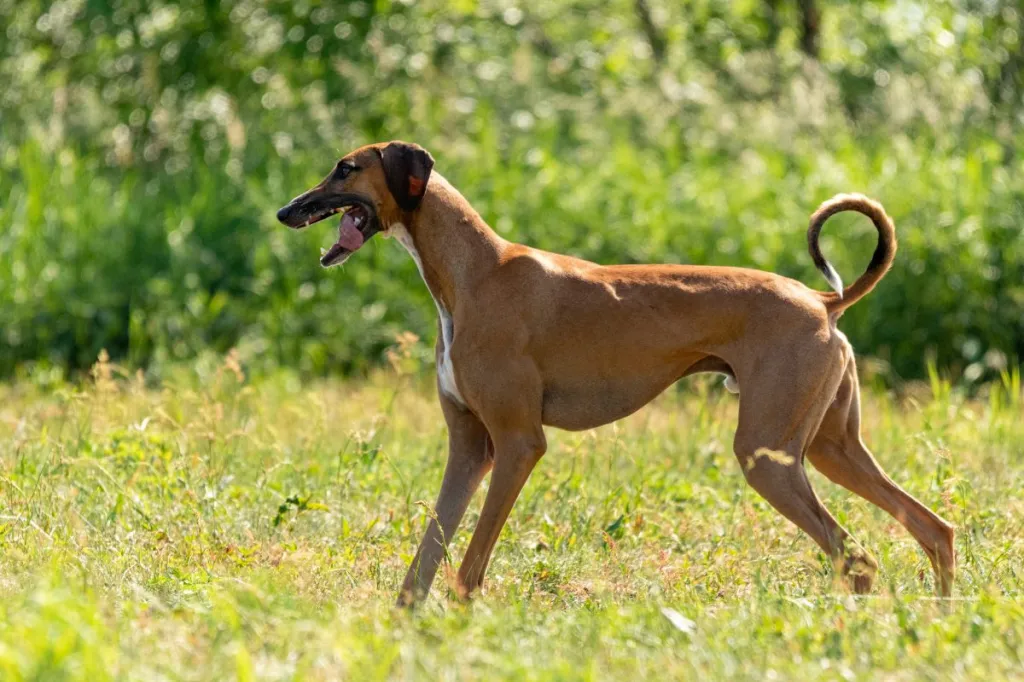
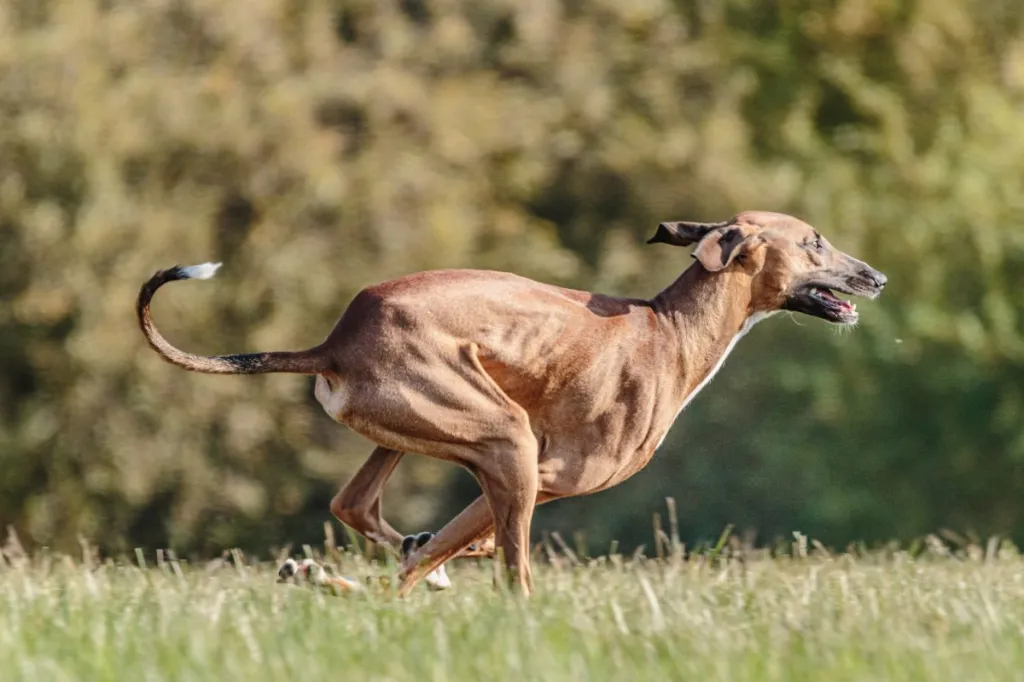
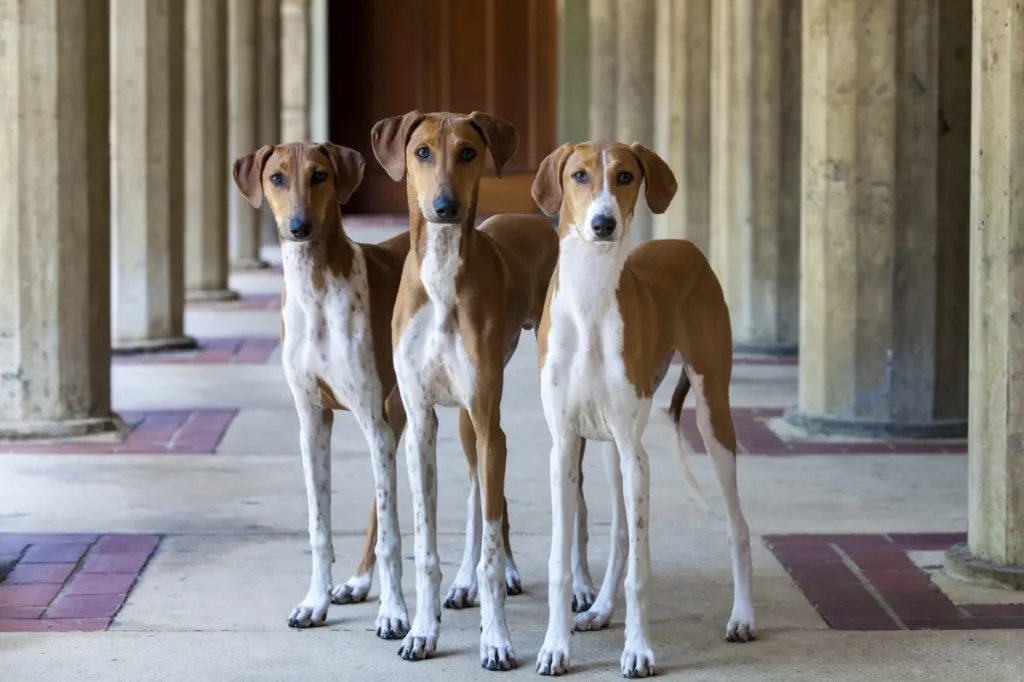
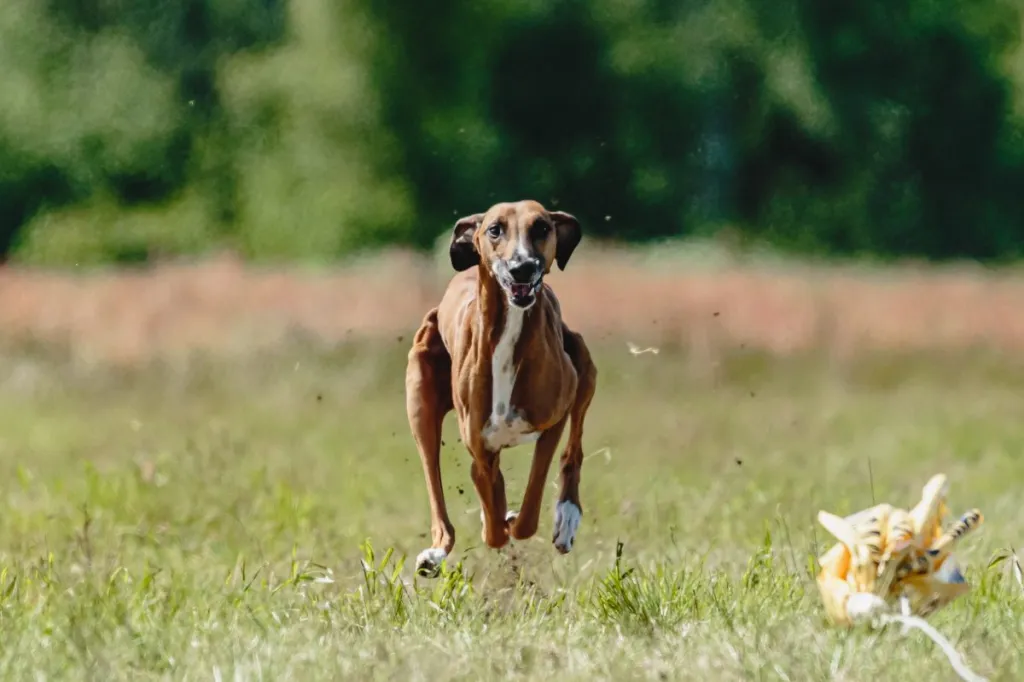
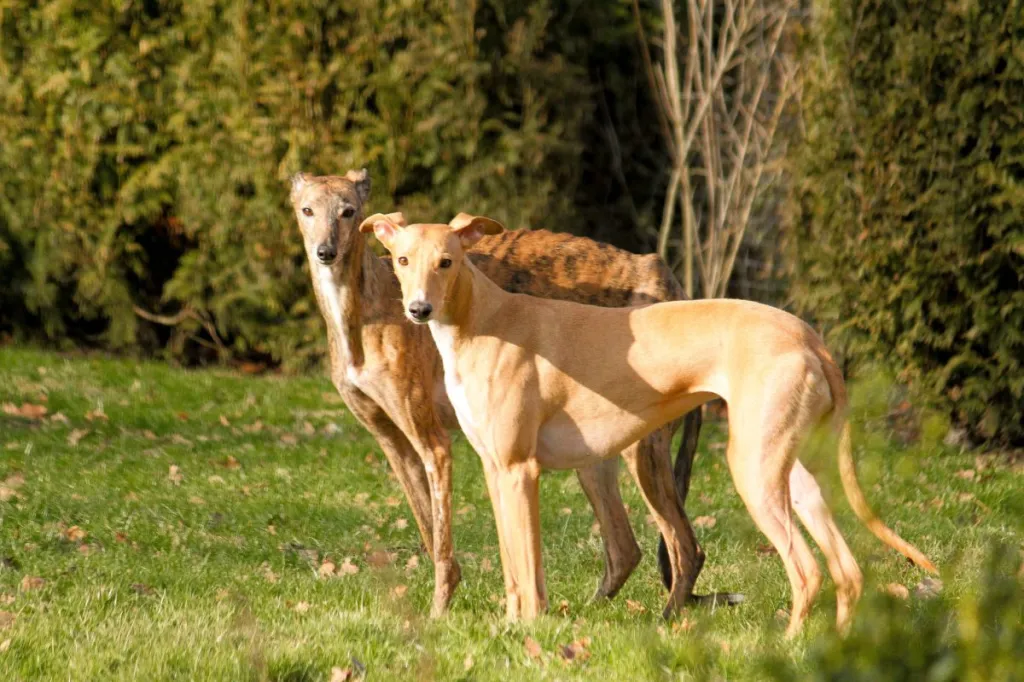
Adaptability
-
Adapts Well To Apartment Living
Looking for the best dog for your apartment? Contrary to popular belief, the suitability of dogs who adapt well to apartment living goes beyond its size. Apartment dwellers have a myriad of dog breeds to choose from as potential companions, with various factors to consider. Some large breeds can adapt well to apartment living and have lower activity levels. Others may require more space and possess higher energy levels. On the other hand, certain small dog breeds with abundant energy can still find contentment with indoor playtime or brisk walks.
However, when selecting a dog that adapts well apartments, it is essential to prioritize your neighbors. Opting for a pet that doesn’t excessively bark and behaves politely when encountering others in shared spaces like is crucial for maintaining a harmonious apartment environment.
In high-rise settings, it’s worth noting that numerous small dogs may exhibit a propensity for high energy and frequent barking. This makes them less suitable for apartment living. Therefore, desirable qualities in an apartment dog encompass being quiet, low-energy, and displaying polite behavior towards other residents.
Factors To Consider When Choosing A Dog For An Apartment
When considering dogs that adapt well to apartments, size alone should not be the sole determinant. Apartment dwellers have a wealth of dog breeds to choose from as potential furry companions. It’s important to remember that the size of your living space is just one factor to consider. While some larger breeds can adapt well to apartment living, with lower, others may require more space and have higher energy levels, making them less suitable for smaller apartments. Conversely, certain small dog breeds with higher energy levels can still thrive in apartments, finding contentment through indoor playtime or brisk walks. However, it is crucial to consider your neighbors’ comfort when selecting a dog. Opt for a pet that doesn’t bark excessively and behaves politely when interacting with others in shared spaces.
Therefore, it’s important to prioritize qualities such as being quiet, low-energy, calm indoors, and exhibiting good manners when living in close proximity to other residents. By considering these factors, you can find a dog that will adapt well to apartment living and create a harmonious living environment for everyone involved.
-
Good For Novice Owners
Some dogs are simply easier than others; they take to training better and are fairly easygoing. They’re also resilient enough to bounce back from your mistakes or inconsistencies.
Dogs who are highly sensitive, independent thinking, or assertive may be harder for a first-time dog parent to manage. You’ll get your best match if you take your dog-owning experience into account as you choose your new pooch.
If you’re new to dog parenting, take a look at 101 Dog Tricks and read up on how to train your dog!
-
Sensitivity Level
Some dogs will let a stern reprimand roll off their backs, while others take even a dirty look to heart. Low-sensitivity dogs, also called “easygoing,” “tolerant,” “resilient,” and even “thick-skinned,” can better handle a noisy, chaotic household, a louder or more assertive owner, and an inconsistent or variable routine. Do you have young kids, throw lots of dinner parties, play in a garage band, or lead a hectic life? Go with a low-sensitivity dog.
-
Tolerates Being Alone
Some breeds bond very closely with their family and are more prone to worry or even panic when left alone by their owner. An anxious dog can be very destructive–barking, whining, chewing, and otherwise causing mayhem. These breeds do best when a family member is home during the day or if you can take the dog to work.
-
Tolerates Cold Weather
Breeds with very short coats and little or no undercoat or body fat, such as Greyhounds, are vulnerable to the cold. Dogs with a low cold tolerance need to live inside in cool climates and should have a jacket or sweater for chilly walks. You can find a great jacket for your dog here!
-
Tolerates Hot Weather
Dogs with thick, double coats are more vulnerable to overheating. So are breeds with short noses, like Bulldogs or Pugs, since they can’t pant as well to cool themselves off. If you want a heat-sensitive breed, your dog will need to stay indoors with you on warm or humid days, and you’ll need to be extra cautious about exercising your dog in the heat.
All-around friendliness
-
Affectionate With Family
When it comes to unconditional love and unwavering loyalty, few animals can rival the affectionate nature of dogs. These remarkable creatures have earned their reputation as man’s best friend, and many breeds are particularly renowned for their love and devotion to their families. With their warm hearts and wagging tails, affectionate family dogs enrich the lives of their owners in countless ways.
One such breed known for its affectionate demeanor is the Golden Retriever. With their gentle temperament and friendly disposition, Golden Retrievers form deep bonds with their families. They eagerly participate in family activities, whether it’s a game of fetch in the yard or cuddling on the couch during a movie night. Their expressive eyes and ever-wagging tails are a testament to the joy they feel in the presence of their loved ones.
Another family-favorite breed is the Labrador Retriever. Renowned for their playful and patient nature, Labradors are excellent companions for children and adults alike. They readily engage in playtime with the kids, showcasing their boundless energy and enthusiasm. But when the day winds down, they seamlessly transition into loving and gentle cuddle buddies, comforting their family members with their warm presence.
Beyond specific breeds, mixed-breed dogs also have a special place in the hearts of families seeking affectionate companions. The shelter dogs, in particular, form deep connections with their adoptive families. They seem to understand the second chance they’ve been given and repay it with endless love and gratitude.
How To Know If A Dog Is Good With Families
The affectionate nature of family dogs extends beyond play and cuddles. Dogs have a remarkable ability to sense their owner’s emotions, offering comfort and support during difficult times. Whether it’s a wagging tail after a long day at work or a sympathetic nuzzle during moments of sadness, they prove time and again that they are attuned to their family’s needs.
It is important to note that not all dogs of the same breed will be equally affectionate. Some dogs may be more independent or aloof, while others may be more clingy or demanding of attention. The best way to find out how affectionate a dog is is to meet them in person and interact with them.
-
Kid-Friendly
Being gentle with children, sturdy enough to handle the heavy-handed pets and hugs they can dish out, and having a blasé attitude toward running, screaming children are all traits that make a kid-friendly dog. You may be surprised by who’s on that list: Fierce-looking Boxers are considered good with children, as are American Staffordshire Terriers (which are considered Pit Bulls). Small, delicate, and potentially snappy dogs such as Chihuahuas aren’t always so family-friendly.
**All dogs are individuals. Our ratings are generalizations, and they’re not a guarantee of how any breed or individual dog will behave. Dogs from any breed can be good with children based on their past experiences, training on how to get along with kids, and personality. No matter what the breed or breed type, all dogs have strong jaws, sharp pointy teeth, and may bite in stressful circumstances. Young children and dogs of any breed should always be supervised by an adult and never left alone together, period.
-
Dog Friendly
Friendliness toward dogs and friendliness toward humans are two completely different things. Some dogs may attack or try to dominate other dogs, even if they’re love-bugs with people; others would rather play than fight; and some will turn tail and run. Breed isn’t the only factor. Dogs who lived with their littermates and mother until at least six to eight weeks of age and who spent lots of time playing with other dogs during puppyhood, are more likely to have good canine social skills.
-
Friendly Toward Strangers
Stranger-friendly dogs will greet guests with wagging tails and nuzzles; others are shy, indifferent, or even aggressive. However, no matter what the breed, a dog who was socialized and exposed to lots of different types, ages, sizes, and shapes of people as a puppy will respond better to strangers as an adult. Remember that even friendly dogs should stay on a good, strong leash like this one in public!
Health And Grooming Needs
-
Amount Of Shedding
If you’re going to share your home with a dog, you’ll need to deal with some level of dog hair on your clothes and in your house. However, shedding does vary greatly among the breeds. Some dogs shed year-round, some “blow” seasonally, some do both, and some shed hardly at all. If you’re a neatnik, you’ll need to either pick a low-shedding breed or relax your standards. To help keep your home a little cleaner, you can find a great de-shedding tool here!
-
Drooling Potential
Drool-prone dogs may drape ropes of slobber on your arm and leave big, wet spots on your clothes when they come over to say hello. If you’ve got a laid-back attitude toward slobber, fine; but if you’re a neatnik, you may want to choose a dog who rates low in the drool department.
-
Easy To Groom
Some breeds are brush-and-go dogs; others require regular bathing, clipping, and other grooming just to stay clean and healthy. Consider whether you have the time and patience for a dog who needs a lot of grooming, or the money to pay someone else to do it.
-
General Health
Due to poor breeding practices, some breeds are prone to certain genetic health problems, such as hip dysplasia. This doesn’t mean that every dog of that breed will develop those diseases; it just means that they’re at an increased risk.
If you’re adopting a puppy, it’s a good idea to find out which genetic illnesses are common to the breed you’re interested in. You may also want to ask if your shelter or rescue has information about the physical health of your potential pup’s parents and other relatives.
-
Potential For Weight Gain
Some breeds have hearty appetites and tend to put on weight easily. As in humans, being overweight can cause health problems in dogs. If you pick a breed that’s prone to packing on pounds, you’ll need to limit treats, make sure they get enough exercise, and measure out their daily food servings into regular meals rather than leaving food out all the time.
Ask your vet about your dog’s diet and what they recommend for feeding your pooch to keep them at a healthy weight. Weight gain can lead to other health issues or worsen problems like arthritis.
-
Size
Get ready to meet the giants of the doggy world! Large dog breeds aren’t just big balls of fluff, they’re like loving, oversized teddy bears on a mission to steal your heart. Need some convincing? Let’s dive into the awesome benefits of owning one!
First things first, these pooches are a living security system! With their impressive size and thunderous barks, they’ll have any would-be intruder running for the hills. Talk about peace of mind! Plus, who needs an alarm when you’ve got a furry giant protecting your castle?
But that’s not all. Large dog breeds are all about loyalty and devotion. They’ll stick by your side through thick and thin, becoming your most dedicated bestie. Their love knows no bounds! When you have a giant fluffball showing you unconditional love, you’ll feel like the luckiest human on the planet.
Now, let’s talk about their talents. These big fellas are the ultimate working partners. With brains and brawn, they’re up for any challenge. From search and rescue missions to lending a helping paw to those in need, these dogs are superheroes in fur coats. They’ll make you proud every step of the way!
Don’t let their size fool you—these gentle giants have hearts as big as their paws. They’re incredible with kids and other pets, spreading their love like confetti. Their patience and kindness make them perfect family pets, ensuring harmony in your household.
Oh, and get ready to break a sweat! These dogs are fitness enthusiasts, and they’ll keep you on your toes. Daily walks, jogs, and play sessions will not only keep them happy and healthy but will also give you a reason to ditch the couch and join in on the fun. It’s a win-win situation!
So, if you’re ready for a dose of big love, go ahead and consider a large dog breed. They’re the best wing-dog you could ever ask for, ready to make your life a thousand times more exciting, loving, and downright awesome! Get ready for the big adventure of a lifetime!
Trainability
-
Easy To Train
Easy-to-train dogs are more adept at forming an association between a prompt (such as the word “sit”), an action (sitting), and a consequence (getting a treat) very quickly. Other dogs need more time, patience, and repetition during training.
Many breeds are intelligent but approach training with a “What’s in it for me?” attitude, in which case you’ll need to use rewards and games to teach them to want to comply with your requests.
Related:
10 Fun, Impressive Tricks You Can Teach Any Dog
-
Intelligence
Dogs who were bred for jobs that require decision making, intelligence, and concentration, such as herding livestock, need to exercise their brains, just as dogs who were bred to run all day need to exercise their bodies. If they don’t get the mental stimulation they need, they’ll make their own work–usually with projects you won’t like, such as digging and chewing. Obedience training and interactive dog toys are good ways to give a dog a brain workout, as are dog sports and careers, such as agility and search and rescue.
-
Potential For Mouthiness
Common in most breeds during puppyhood and in Retriever breeds at all ages, mouthiness means a tendency to nip, chew, and play-bite (a soft, fairly painless bite that doesn’t puncture the skin). Mouthy dogs are more likely to use their mouths to hold or “herd” their human family members, and they need training to learn that it’s fine to gnaw on chew toys, but not on people. Mouthy breeds tend to really enjoy a game of fetch, as well as a good chew on a toy that’s been stuffed with kibble and treats.
-
Prey Drive
Dogs with a high prey drive have an instinctive desire to stalk, capture, and prey upon potential food sources. Dogs who were bred to hunt, such as Terriers, have an inborn desire to chase — and sometimes kill — other animals. Anything whizzing by — such as cats, squirrels, and perhaps even cars — can trigger that instinct.
How to address a high prey drive
Off-leash adventures are too great a temptation for pups who will wander and hunt. Dogs who like to chase need to be leashed. And, even on a leash, you may experience your dog pulling on the leash to reach rodents or birds in their sight. Otherwise, these pups should be kept in a fenced area when outdoors. If your pup has a high prey drive, you’ll need a high, secure fence in your yard.
These breeds generally aren’t a good fit for homes with smaller pets that can look like prey, such as cats, hamsters, or small dogs. Breeds that were originally used for bird hunting, on the other hand, generally won’t chase, but you’ll probably have a hard time getting their attention when there are birds flying by.
Other behavioral concerns
Observing your dog’s prey drive, which is instinctual and biologically-rooted, is not the same as observing aggression. Much aggression is born of fear and anxiety, especially in the case of dog aggression toward humans.
The tendency to wander, even into oncoming traffic, can produce diasterious results for pups with predatory instincts. It can also lead to pups being bitten by snakes or attacked by other wild animals they may pursue while on the hunt.
-
Tendency To Bark Or Howl
Some breeds sound off more often than others. When choosing a breed, think about how often the dog vocalizes. Learn more about breeds with a tendency to bark or howl.
If you’re considering a hound, would you find their trademark howls musical or maddening? If you’re considering a watchdog, will a city full of suspicious “strangers” put your pup on permanent alert? Will the local wildlife literally drive your dog wild? Do you live in housing with noise restrictions? Do you have neighbors nearby? Then you may wish to choose a quieter dog.
-
Wanderlust Potential
Some breeds are more free-spirited than others. Nordic dogs such as Siberian Huskies were bred to range long distances, and given the chance, they’ll take off after anything that catches their interest. And many hounds simply must follow their noses–or that bunny that just ran across the path–even if it means leaving you behind.
Exercise needs
-
Energy Level
High-energy dogs are always ready and waiting for action. Originally bred to perform a canine job of some sort, such as retrieving game for hunters or herding livestock, they have the stamina to put in a full workday. They need a significant amount of exercise and mental stimulation, and they’re more likely to spend time jumping, playing, and investigating any new sights and smells.
Low-energy dogs are the canine equivalent of a couch potato, content to doze the day away. When picking a breed, consider your own activity level and lifestyle, and think about whether you’ll find a frisky, energetic dog invigorating or annoying.
-
Intensity
A vigorous dog may or may not have high energy, but everything they do, they do with vigor: they strain on the leash (until you train them not to), try to plow through obstacles, and even eats and drinks with great big gulps. These dynamos need lots of training to learn good manners, and may not be the best fit for a home with young kids or someone who’s elderly or frail. A low-vigor dog, on the other hand, has a more subdued approach to life.
-
Exercise Needs
Some breeds do fine with a slow evening stroll around the block. Others need daily, vigorous exercise, especially those that were originally bred for physically demanding jobs, like herding or hunting.
Without enough exercise, these breeds may put on weight and vent their pent-up energy in ways you don’t like, such as barking, chewing, and digging. Breeds that need a lot of exercise are good for outdoorsy, active people, or those interested in training their dog to compete in a high-energy dog sport, such as agility.
-
Potential For Playfulness
Some dogs are perpetual puppies — always begging for a game — while others are more serious and sedate. Although a playful pup sounds endearing, consider how many games of fetch or tag you want to play each day, and whether you have kids or other dogs who can stand in as playmates for the dog.
Azawakh Overview
The proud and elegant Azawakh hails from the Sahel region of the Sahara Desert, where they have long served as guardians, hunters, and companions to local tribes. They take their name from the Azawakh valley in the Sahara. Azawakhs show gentleness and affection towards their families, but they can be reserved around strangers and are not fond of being touched by unfamiliar people. Additionally, they are protective of their loved ones and property. Fans of the breed admire their unique combination of loyalty and independence.
As sighthounds, they are drawn to movement and have a natural inclination to chase animals, people on bicycles or skateboards, and even running children. However, their lean and muscular build makes them excellent companions for joggers and runners. Indoors, they are relatively calm and are content to relax on the couch. To meet their exercise needs, a large fenced yard or a nearby enclosed park where they can run freely is ideal. They require at least half an hour of active exercise or playtime every day. It’s important to note that despite their dignified demeanor, in cold weather, they need to wear a sweater as their short hair and low body fat make them prone to getting chilled easily.
Azawakh History
The Azawakh has a rich history as a result of selective breeding by the Tuareg people, a nomadic pastoralist group residing in the Sahara Desert and the Sahel region. For centuries, the Tuareg have played a crucial role in shaping the Azawakh’s characteristics, using them both as skilled hunting dogs for small game and as loyal guardians for their herds and encampments. This close relationship between the Tuareg and the Azawakh has forged a deep bond, with the breed becoming an integral part of their nomadic lifestyle and culture. The Azawakh’s exceptional agility and keen sense of sight have made them valuable assets in hunting swift prey across the vast desert landscape, while their watchful and protective nature has ensured the safety of their owner’s livestock and families. As the Tuareg continue to maintain their traditional way of life, the Azawakh remains a cherished and treasured companion, embodying the spirit of the Sahara and the resilience of its people.
Azawakh Size
At the shoulder, male Azawakhs measure 25 to 29 inches and weigh between 44 to 55 pounds. On the other hand, female Azawakhs stand at heights of 23.5 to 27.5 inches and have a weight range of 33 to 44 pounds.
Azawakh Personality
The Azawakh is a breed known for its unique and captivating personality. They are dignified, independent, and aloof, which can sometimes make them appear reserved or standoffish towards strangers. However, they are deeply loyal and affectionate with their families and those they trust. While they may not be overly demonstrative in their affection, their bond with their human companions is strong and enduring. Azawakhs are also renowned for their keen alertness and watchful nature, making them excellent watchdogs. They are highly protective of their loved ones and will not hesitate to defend their family and property if they sense any threat. Despite their aloofness, they are not aggressive by nature and prefer to avoid conflicts if possible.
As sighthounds, Azawakhs have an innate instinct to chase moving objects, including small animals, bicycles, or even running children. Their swift and agile nature allows them to excel in activities like lure coursing and agility. While they have bursts of energy when exercising, indoors, they tend to be calm and enjoy lounging comfortably. However, they do require regular exercise and mental stimulation to stay happy and healthy.
Azawakh Health
The Azawakh is generally a healthy breed with a life expectancy of around 10 to 12 years. However, like all dog breeds, they can be prone to certain health conditions. Some of the health issues to be aware of in the Azawakh include:
-
Hip Dysplasia: A hereditary condition where the hip joint doesn’t fit properly into the hip socket, leading to pain, lameness, and arthritis.
-
Progressive Retinal Atrophy (PRA): A degenerative eye disease that can lead to vision loss and blindness.
-
Cardiac Issues: Some Azawakhs may be prone to heart conditions such as dilated cardiomyopathy.
-
Autoimmune Disorders: They may be susceptible to certain autoimmune diseases, including autoimmune thyroiditis.
-
Bloat: Like many deep-chested breeds, the Azawakh can be prone to bloating, which is a life-threatening condition that requires immediate veterinary attention.
-
Skin Issues: They may have sensitive skin, which could lead to allergies or skin irritations.
To ensure the health and well-being of your Azawakh, it’s essential to work with a responsible breeder who tests their breeding dogs for genetic health conditions and provides health clearances. Regular veterinary check-ups, a balanced diet, regular exercise, and proper grooming can also contribute to a healthy and happy Azawakh. As with any dog breed, early detection and proactive management of any health issues are crucial for a long and fulfilling life.
Azawakh Feeding
Feeding an Azawakh requires attention to their nutritional needs and activity level to maintain their health and energy. As a high-energy and active breed, they need a balanced diet to support their active lifestyle. Here are some feeding guidelines for the Azawakh:
-
High-Quality Dog Food: Choose a premium-quality dog food that is specially formulated for medium to large-sized breeds with high energy needs. Look for a food that contains a good balance of protein, fats, and carbohydrates.
-
Portion Control: The amount of food your Azawakh needs depends on factors such as age, size, activity level, and metabolism. Follow the feeding guidelines provided on the dog food package, but adjust the portions based on your dog’s individual needs. Be cautious not to overfeed, as Azawakhs can be prone to gaining weight if not properly exercised.
-
Regular Meal Times: Establish a consistent feeding schedule with two meals a day for adult Azawakhs. Puppies may require more frequent meals. Avoid leaving food out all day, as it can lead to overeating and weight gain.
-
Fresh Water: Always provide fresh, clean water for your Azawakh. Proper hydration is essential, especially for active dogs.
-
Monitor Weight: Regularly monitor your Azawakh’s weight and body condition. Adjust the feeding amount accordingly to maintain a healthy weight.
-
Sensitive Stomachs: Some Azawakhs may have sensitive stomachs or food allergies. If you notice any digestive issues or food intolerances, consult with your veterinarian to find the best diet for your dog.
Remember that each dog is unique, so it’s essential to work with your veterinarian to develop a feeding plan tailored to your Azawakh’s specific needs. Proper nutrition is vital to support their active lifestyle and overall health.
Azawakh Coat Color And Grooming
The Azawakh is adorned with a short and smooth coat that displays a diverse range of colors, ranging from clear sand to deep red, and also including white, black, blue, gray, brindle, grizzle, parti-color, and various shades of brown, including chocolate. Their stomach area may be hairless. Maintaining their coat’s sleek appearance is relatively simple with a once-over using a hound glove. While regular shampooing is not required, occasional baths are recommended. It is best to use a mild, hypoallergenic shampoo since Azawakhs tend to have sensitive skin. By attending to their grooming needs, you can ensure that your Azawakh looks and feels its best while keeping their skin healthy and comfortable.
Azawakh Children And Other Pets
The Azawakh generally gets along well with children and can be affectionate and gentle with them. However, as with any dog breed, early socialization and proper training are essential to ensure a harmonious relationship between the dog and children. Azawakhs may be reserved or aloof with strangers, including children they don’t know, but they are typically not aggressive unless they feel threatened or cornered.
When it comes to other pets, particularly smaller animals like cats or small dogs, the Azawakh’s hunting instinct may come into play. As sighthounds, they have a strong prey drive and may be prone to chasing smaller animals. Early socialization and proper introductions can help mitigate any potential issues. If raised together from a young age, they can get along well with other pets in the household, but it’s essential to supervise their interactions.
In any case, it’s vital to consider the individual temperament and personality of both the Azawakh and the other pets before introducing them to ensure a safe and harmonious living environment for everyone involved. Responsible pet ownership, proper training, and supervision are key to successful relationships between the Azawakh and children or other pets.
Azawakh Rescue Groups
Because of the rarity of this breed, finding an Azawakh in a shelter may be difficult. However, you may have luck by checking with rescue organizations dedicated to the welfare and placement of breeds from the Hound group.





